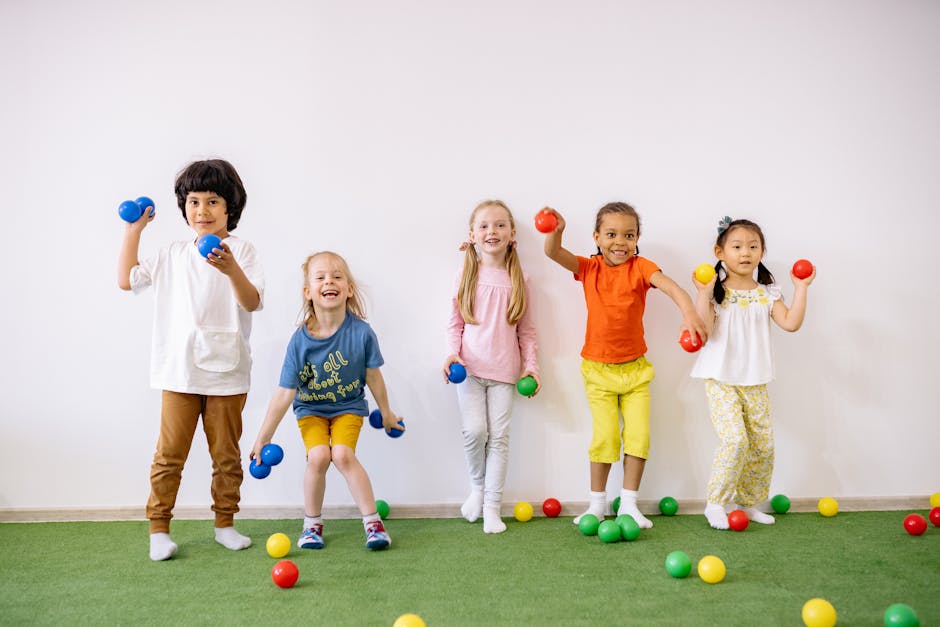Importance of Occupational Therapy Games for Children
Occupational therapy games are crucial for children as they help in enhancing their motor skills, coordination, and cognitive abilities. These games are designed to make therapy enjoyable for kids while improving their development. By engaging in these activities, children can strengthen their muscles, improve their focus, and boost their self-confidence. Occupational therapy games also provide a fun way for children to learn important life skills, such as social interaction and problem-solving.
Benefits of Occupational Therapy Games
Occupational therapy games can help children improve their fine motor skills, hand-eye coordination, and social skills in a fun and engaging way. These games can also assist in enhancing a child’s sensory processing, cognitive skills, and emotional regulation. By incorporating occupational therapy games into a child’s routine, parents and therapists can promote holistic development while children have a great time playing and learning.
Understanding Occupational Therapy for Children
Occupational therapy helps children improve skills needed for daily activities. It focuses on enhancing their independence and development. Therapists tailor activities to each child’s needs, making therapy engaging and effective. Through play-based methods, children learn and grow while having fun. Occupational therapy can assist children in areas like fine motor skills, sensory processing, play skills, and handwriting.
Ages 0-2: Games and Activities
For children aged 0-2, simple activities like peek-a-boo and playing with soft toys can help in their development. Singing songs, stacking blocks, and exploring textures are also great for their sensory skills. Remember, at this age, the focus is on exploration and basic interaction with the environment.
Ages 3-5: Games and Activities
During the ages of 3 to 5, children are curious and eager to learn through play. Engaging them in fun activities that promote physical and cognitive development is vital. Consider activities like puzzle games, sorting activities, pretend play, and building blocks, which can help enhance their problem-solving skills, creativity, and hand-eye coordination. Outdoor activities such as obstacle courses and nature scavenger hunts can also contribute to their gross motor skills and sensory exploration. Remember, at this age, children learn best when they are having fun!
Ages 6-8: Games and Activities
Engage children aged 6 to 8 with fun and interactive games and activities! At this age, kids are eager to learn and play, making it the perfect time to incorporate educational games that promote their development. Here are some exciting game ideas and activities tailored to stimulate their minds and keep them entertained:
- Simon Says: A classic game that enhances listening skills and improves memory.
- Scavenger Hunts: Encourage exploration and problem-solving skills by setting up indoor or outdoor hunts with clues.
- Puzzle Time: Boost cognitive abilities with age-appropriate puzzles that challenge and entertain.
- Storytelling: Foster creativity and language skills by encouraging children to invent stories or participate in group storytelling.
- Obstacle Courses: Promote physical activity and coordination by creating obstacle courses with different challenges.
- Arts and Crafts: Enhance fine motor skills and creativity through various art projects like painting, coloring, and crafting.
These activities are not only enjoyable but also beneficial for the growth and development of children in the 6 to 8 age group.
How to Choose the Right Games
When selecting games for your child’s occupational therapy, consider their age and interests. Opt for games that are educational and engaging to keep them motivated. Look for games that target specific skills your child needs to improve, such as fine motor skills, hand-eye coordination, or sensory processing. It’s essential to choose games that are developmentally appropriate for your child’s age range. Engaging in play is crucial for children’s overall development, so make sure to choose games that are not only fun but also beneficial for your child’s growth and learning.
Incorporating Occupational Therapy at Home
You can easily incorporate occupational therapy at home by using everyday activities as therapeutic exercises. Encourage your child to participate in household chores like setting the table or sorting laundry to improve their fine motor skills. Sensory-focused games such as playdough or finger painting can help with sensory processing. Engage in pretend play activities like cooking or dressing up to enhance social and cognitive skills. Establish a routine that includes physical activities like dancing or yoga to promote coordination and balance. By making therapy a part of your daily routine, you can support your child’s development in a fun and engaging way.
Occupational Therapy Games in Schools and Clinics
Occupational therapy games are commonly used in schools and clinics to help children develop essential skills in a fun and engaging way. These games are designed to improve coordination, fine motor skills, cognitive abilities, and social interaction among children aged 0 to 8. Many schools and clinics incorporate these games into their therapy sessions to make the learning process enjoyable and effective for young children.
Conclusion and Recap
To wrap things up, remember that occupational therapy games can be a fun and effective way to help children aged 0 to 8 develop important skills. Whether it’s enhancing fine motor skills, promoting sensory integration, or improving social interactions, these games offer a range of benefits for young learners. By incorporating play into therapy sessions, children can engage in meaningful activities that support their growth and development. So, don’t underestimate the power of play when it comes to occupational therapy for children!

